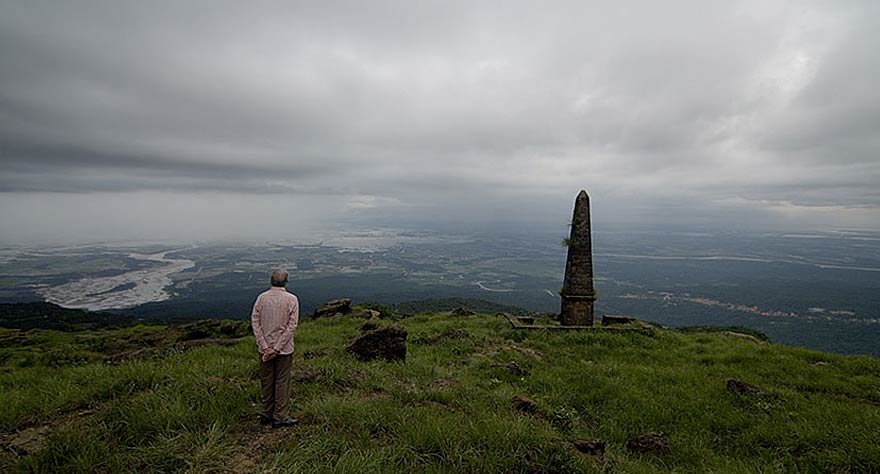
A documentary on India's monsoon season plays out like a lesser National Geographic show.

A documentary on India's monsoon season plays out like a lesser National Geographic show.
Sturla Gunnarsson’s Monsoon opens on a time-lapse photography sequence that could feel right at home in Ron Fricke’s Baraka. With the camera placed high up on a mountain, a massively thick wall of clouds starts heading straight towards the lens. Suddenly (or, in real-time, very slowly), the clouds roll over the mountaintop, swallowing everything up in complete darkness. The scene serves as a reminder of how, no matter how much power we measly humans think we have, we are at the complete mercy of Mother Nature.
It’s just too bad Gunnarsson can’t trust his own footage. Shooting on 4K cameras with cinematographer Van Royko, Gunnarsson travelled across India during the 2013 monsoon season to capture the weather’s grand-scale impact on the country. While monsoon is typically associated with large amounts of rain and flooding, it’s more than just a downpour; monsoon season can also bring devastating droughts to certain areas of India as well. The decision to shoot on such a high-resolution naturally leads to some striking images, but Gunnarsson’s presentation, including very on-the-nose narration, make Monsoon feel more like a National Geographic special. It’s an annoying amount of hand holding that sucks out any power the visuals might have.
Gunnarsson’s decision to present an extraordinary event through such a bland, conventional format is a major disappointment, since the film deals with such a rich subject. The documentary only provides fleeting glimpses of potential avenues to explore, like when a former director of the Indian Meteorology Department offers a more philosophical interpretation of the monsoon. “Monsoon is the soul of India,” he says, since it’s the only source of water (and therefore life) for the country. The statement touches upon the idea of monsoon as a Godlike entity, a force of great power that indiscriminately gives and takes.
Monsoon doesn’t bother delving further into that interpretation, let alone the spiritual and religious influence that monsoon has on India. Instead, Gunnarsson prefers to turn the film into a sort of travelogue for his voyage across the country, making pit stops along the way to profile a quirky character or two. This includes a bookie taking bets on predicting weather patterns, as well as the current director of the Indian Meteorology Department. These segments feel forced, like when Gunnarsson tries to portray the IMD director as someone hard to communicate with, even though he’s happy to chat on camera later in the film. The whole thing reeks of laziness, as if Gunnarsson is taking the most middlebrow and appealing route with his film rather than something more in-depth or interesting.
When Gunnarsson does go back to highlighting the various ways monsoon impacts Indians, things take a turn for the interesting again. One example comes when he compares two fishing villages in different areas of the country. One village bans fishing during monsoon because it’s breeding season for fish, meaning poor villagers have to starve or break the law and risk their lives by going out into the ocean for food. The other town winds up having fish practically jump out of the water into their hands, as the changing weather brings fish closer to shore. As the documentary trudges along, moments like this become rare, making the film’s final third a chore to watch.
What’s most frustrating is the way Gunnarsson insists on inserting his own opinions into the picture. Despite staying behind the camera, Gunnarsson can’t help but narrate on how he felt about a certain moment while filming. His lack of on-screen presence makes these moments, like saying his own disbelief in God was shaken by watching Indians worship, feel unnecessary and self-indulgent. There’s also something problematic about Gunnarsson’s need to frame certain scenes through his perspective as a white outsider to the country. It exposes Monsoon to be a lazy documentary. Gunnarsson avoids the challenge of delving into India’s culture, preferring to take the perspective of a tourist wowed by all the exoticism on display. It might be more appropriate to describe Monsoon as a safari than a piece of documentary filmmaking.